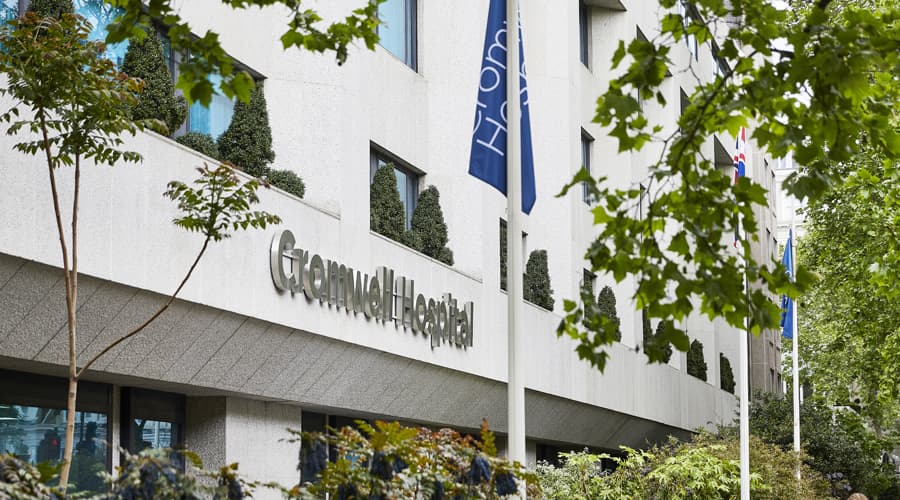Polysomnography with multiple sleep latency test
A polysomnogram (PSG) is carried out to investigate a multitude of sleep disorders, while a multiple sleep latency test (MSLT) provides an objective measurement of daytime sleepiness.
What is polysomnography with an MSLT?
A polysomnogram (PSG) is carried out to investigate a multitude of sleep disorders, while a multiple sleep latency test (MSLT) is an objective measurement of daytime sleepiness. Performed together, the test requires an overnight admission to our sleep room and lasts 24 hours.
The test is performed in two parts: the PSG and the MSLT. The PSG involves measuring brain wave activity, eye, and limb movements whilst monitoring the breathing pattern and pulse rate during sleep. It is a non-invasive test which requires several sensors and electrodes to be placed on specific points of the body. Video is also recorded during the study to investigate any movements that might be related to sleep behaviours.
The following morning, all sensors apart from the head sensors are removed, and the MSLT portion of the study begins. The MSLT involves four to five scheduled naps throughout the day. Each nap is two hours apart. Following each nap, you will be asked some questions which will provide a subjective measurement of your sleep quality.
A MSLT is performed in patients with complaints of excessive sleepiness. It measures the sleep latency (time it takes to fall asleep) which is used to measure physiological sleepiness, and what stage of sleep you enter into during each nap.
The PSG portion of the study is performed to exclude any alternative contributors to excessive sleepiness, such as obstructive sleep apnoea, and to ensure adequate sleep overnight.
Having a polysomnogram with an MSLT
Preparation
You will be admitted into Cromwell Hospital for one night.
Once settled in your room, a physiologist will meet you, explain the test, and ask you to change into your pyjamas. They will then begin applying the sensors, which is a process that usually takes one-and-a-half to two hours. Sensors will be glued to the scalp, and placed on the face, chest, hand, and legs.
You will be able to move freely around your room once connected. You will also have the option to have dinner once the connection is complete. If you wish to eat before this, we ask that you have dinner before attending your appointment.
During the test
You will be asked to try to relax as you would at home and to go to bed at your routine time. The recording is taken whilst you sleep.
In the morning, the limb and respiratory sensors will be removed. You will be encouraged to stay out of bed and to remain alert. Breakfast will be served at either side of your first nap, depending on your preference.
At allocated times throughout the day, you will be instructed to return to bed and try to initiate sleep. The physiologist will analyse each nap for sleep latency and ask you to describe your nap. After four to five naps are completed, the test is terminated.
You will be offered lunch during the day. However, we ask that you avoid any caffeine or high sugar foods which may affect your sleep.
Once completed
The physiologist will disconnect the sensors and advise you to shower and wash your hair in the ensuite of your room. This will help reduce any possible skin irritation. Once disconnected you are free to leave.
Overall, the test takes up to 24 hours.
Admission is usually at 6:30pm and we aim to have you discharged before 6pm the following day. The physiologist will keep you informed throughout the day if there is any likelihood of a delayed discharge.
We ask that you attend your clinic appointment on time to ensure there is no delay to your normal routine.
Please come with clean hair. Make up, nail polish, and acrylic nails will need to be removed prior to the test as this will affect the signals. Please bring comfortable clothes or pyjamas for sleeping in, as you won’t be able to change out of these until the MSLT is complete.
Please refrain from caffeine and alcohol on the afternoon of the test.
We recommend you bring something to help you wind down in the evening, such as a book, and something to keep you busy during the MSLT portion of the test.
Do avoid making work commitments as this may interfere with the nap times.
There is a television and Wi-Fi in the room, although we ask that you use these within reason as we do not want to compromise the quality of your sleep.
The data is analysed by the physiologist. Once completed, our sleep consultant will interpret and report the results. The final report will be returned to the referring doctor within 10 days of completion. A follow-up consultation is advised with your referring doctor to discuss any findings.
Paying for your treatment
We welcome both self-paying and insured patients.
Self-pay patients
We offer several ways for patients to self-pay, including pay-as-you-go and self-pay packages.
Insured patients
At Cromwell Hospital, we accept private health insurance from most major providers, including AXA, Aviva, Bupa, and Vitality.
Our locations

Book an appointment today
Our telephone lines are open 8am to 8pm Monday to Friday and 8am to 2pm Saturdays.
Alternatively, fill out our appointment request form and we'll be in touch shortly.
Please note - regrettably we are unable to answer specific medical questions or offer medical advice via email or telephone.
